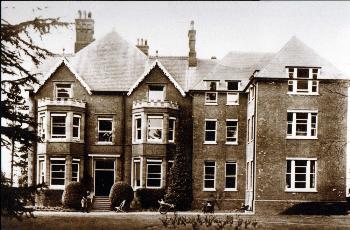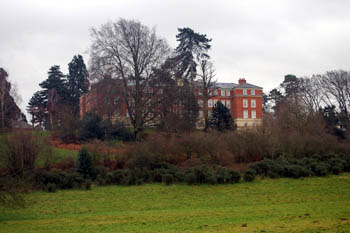Edgbury Hospital Aspley Heath

Edgbury at the time of its opening [Z818/109]
Aspley Heath was considered very healthy in the nineteenth century based on the fact that it was quite elevated (up to 556 feet above sea level) and covered in pine woods, like the foothills of the Alps. It was also stated that the difference between Summer high temperature and Winter low temperature was smaller here than anywhere else in Britain. On the strength of this a number of medical facilities were established here: Daneswood; Edgbury, Homewood and The Mount.
Edgbury was built as a private home, intended for a Mr.Allnutt but was sold to the Duchess of Bedford who intended using it as a hospital but who cancelled her plans owing to taxation. It was then leased by the Edmonton [Middlesex] Board of Guardians as a convalescent home in 1928 and transferred to Middlesex County Council in 1930. Up to 115 Londoners could be accommodated and in 1951 it was extended. The Children's Unit closed in 1953 and in 1956 the convalescent home itself closed becoming a hospital for pre-convalescent and post-operative patients with half the beds reserved for patients from Bedford and half for Luton patients. The home closed in the 1980s, was briefly used by business and then demolished, modern luxury flats being built on the site.
In 1927 this part of Bedfordshire was valued under the terms of the Rating Valuation Act 1925; every piece of land and property was inspected to determine the rates to be paid on it. The valuer [DV1/C/242] found a lodge of brick and slate with two bedrooms, living room, kitchen, scullery and pantry, occupied by E.J.Peppitt; outside were a wc and barn; mains water and drainage were laid on as was gas but the latter was not used.
The main house, set in 5.73 acres, was not yet used as a hospital, the valuer remarking: "To be used as hospital during war - never used since". The structure was of brick and slate and consisted of the following rooms: in the basement were a coal house, larder, two store rooms and the bottom of the lift. On the ground floor was a hall with a radiator, another entrance hall, three reception rooms, a back stairs to the basement, two store cupboards, a kitchen ("large gas stove"), scullery, wc, pantry, lift. waiting room with a radiator, surgeon's room, surgeon's bathroom and wc, with radiator, operating theatre (2 radiators), two sterilizing rooms and a further reception room with two radiators.
On the first floor, up 26 stairs, hence the lift, were a dressing room with a radiator, six bedrooms, a lift and a passageway with two bathrooms with radiators. two wcs and a slush room with radiator. The second floor, up another 19 steps, contained 9 bedrooms, one with a radiator, a linen cupboard and passage way with two radiators and two bathrooms with radiators, 2 wcs and a slush room with a radiator; evidently the lift did not reach this floor.
Outside were a wc, three boilers, one for the radiators, two for the hot and cold sinks in the surgeon's room and operating theatre and baths. the premises was electrically wired but, as yet, had no plant. there was a fire hydrant on the first and second floors. Outside was a block of buildings with a heated three car garage and a cottage with kitchen, living room and pantry downstairs and three bedrooms above which had mains water and drainage and a coal and wood barn and wc outside.

The former Edgbury Hospital in January 2008